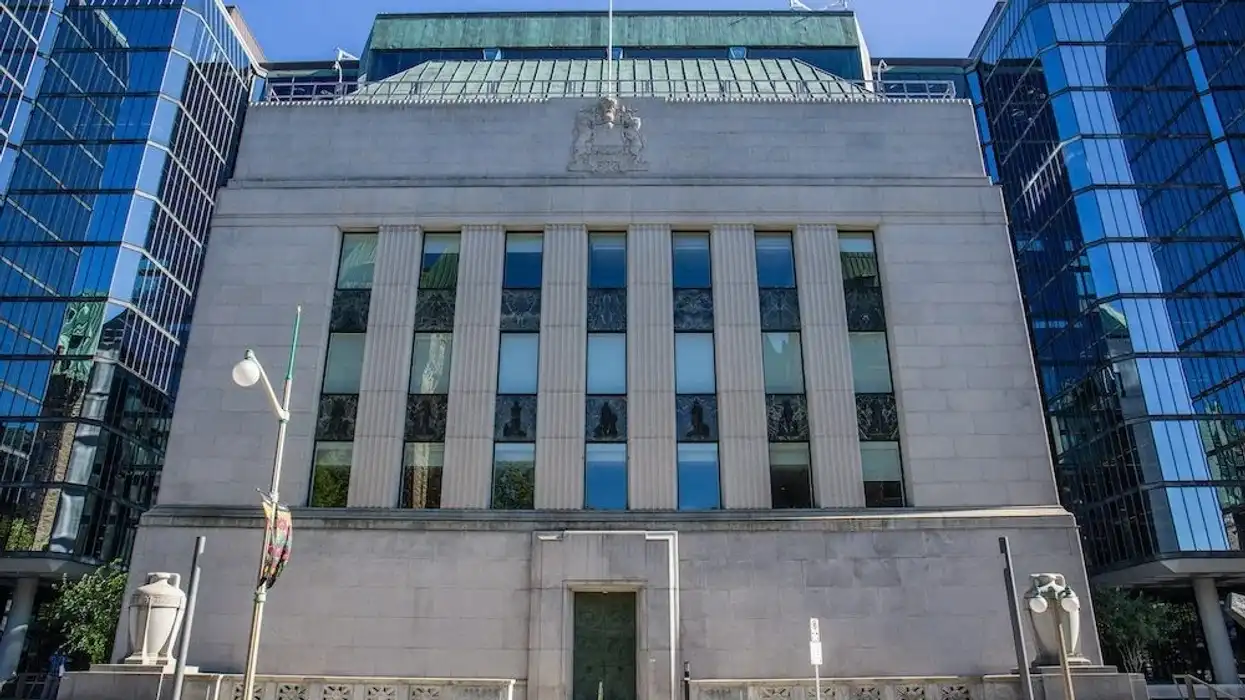It’s been a long road on the interest rate front, but these days do have a light-at-the-end-of-the-tunnel twinge, as markets have been pricing the first cut of the cycle for June. However, Canada’s latest GDP reading — it came out on Thursday, and shows a stronger-than-anticipated 0.6% rise in January and an estimated 0.4% rise in February — may have thrown a wrench in the works for the central bank.
Chief Economist with BMO, Douglas Porter, pointed out in a note that Canadian real GDP hasn’t been this “robust” in exactly a year. The implication, he said, is that January’s reading — in combination with February’s advanced reading — will likely result in a stronger first-quarter GDP, which could, in part, make the Bank of Canada (BoC) “a bit less comfortable” with the outlook for inflation.
“If today's February estimate holds, even a flat performance in March builds in a 3.5% annualized growth rate for Q1,” Porter said. “Our call for a June rate cut still hinges on the coming CPI reports, but if this strength in activity is close to replicated into Q2, the BoC will see much less urgency to cut rates any time soon.”
Other economists seem less fazed by today’s reading. RBC’s Claire Fan urged clients in an update to take February’s GDP estimate “with a grain of salt” as any estimate tends to be “highly revision prone.”
“Labour market conditions also continue to weaken into early 2024 as the unemployment rate edged higher, and separately reported job vacancies for January from this morning continued to decline,” Fan also said. “All told, we retain our assessment that the economic backdrop remains weak, and continue to look for the Bank of Canada to start cutting interest rates in June.”
Similarly, Desjardins Economist Randall Bartlett wrote today that this latest GDP data doesn’t sway the company’s forecast for rate cuts, especially given the fact that inflation came in “below expectations” in both January and February.
“The recent announcement of federal government plans to reduce non-permanent resident admissions should weaken this material tailwind to both growth and inflation going forward,” Bartlett added. “As such, we are of the view that the Bank remains on track to begin cutting interest rates at its upcoming June meeting.”
It’s worth noting that the BoC, at long last, has contributed their two bits to the rate cut conversation. In its latest summary of deliberations, released last week, the Bank said that the “conditions for rate cuts should materialize over the course of this year” — if the economy evolves in line with its projection, that is.
The deliberations also cautioned that there were some “diversity of views” amongst members of Governing Council pertaining to “when there would likely be enough evidence that these conditions were in place” and “how to weight the risks to the outlook.”
Our takeaway: cuts are on the horizon, but it’s probably best not to hold your breath.


















